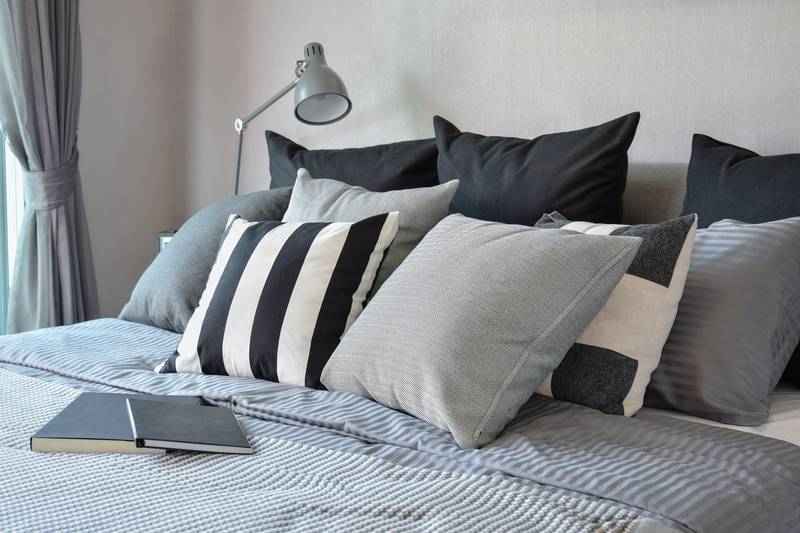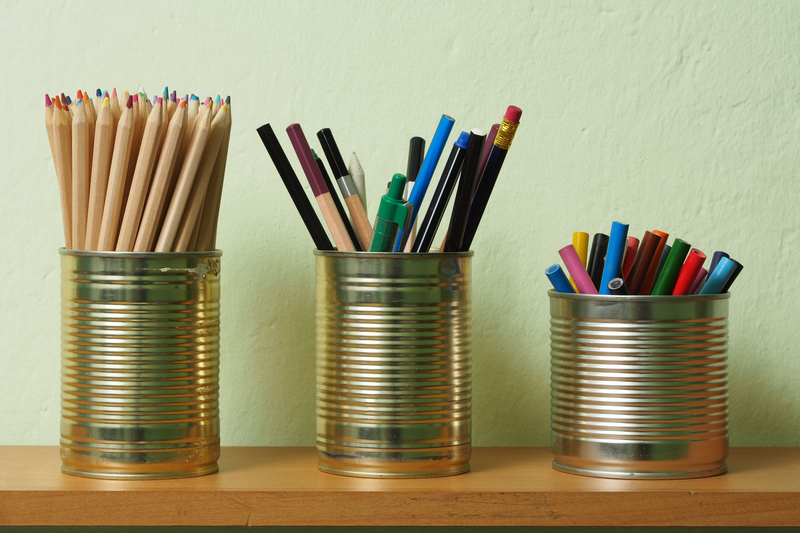Simplify Your Surroundings with Minimalism
Posted on 10/06/2025
Simplify Your Surroundings with Minimalism: A Comprehensive Guide
In a world overflowing with constant notifications, cluttered spaces, and endless consumption, more people are searching for ways to simplify their surroundings and regain peace of mind. The answer? Minimalism. This powerful lifestyle choice enables you to create a meaningful, intentional space that allows you to focus on what truly matters.
But what does it mean to embrace minimalism, and how can you start to declutter your environment for a healthier, more balanced life? In this in-depth article, you'll discover everything you need to know about simplifying your surroundings with minimalism. We'll explore key benefits, actionable steps, expert tips, and how to maintain this way of life for lasting happiness.

What is Minimalism? Understanding the Core Philosophy
Minimalism isn't just about having fewer things--it's a deliberate practice of focusing on the essentials. At its heart, minimalism is about stripping away the excess and highlighting what's truly important in life. It's a celebration of quality over quantity and intention over accumulation.
- Minimalist living encourages mindfully choosing items and experiences that add value.
- It's about creating serene, functional spaces that foster clarity and peace.
- Minimalism can be applied to your home, online presence, work environment, and even your relationships.
Key Principle: Minimalism is not about deprivation, but about intentional abundance in areas that matter most to you.
Types of Minimalism
- Physical minimalism: Decluttering your physical space and possessions.
- Digital minimalism: Reducing digital clutter and screen time.
- Emotional minimalism: Letting go of toxic relationships and unnecessary commitments.
- Visual minimalism: Simplifying aesthetics and design elements in your environment.
The Benefits of Simplifying Your Surroundings
Why should you consider simplifying your surroundings with minimalism? The benefits go far beyond tidier shelves. Here's a look at the transformative advantages:
Mental Clarity and Reduced Stress
Clutter is proven to increase feelings of anxiety and / or stress. By adopting a minimalist mindset, you'll notice a calmer mind and an increased ability to focus. A clean, orderly space helps to eliminate distractions so you can concentrate on what really matters.
Enhanced Productivity
Minimalist workspaces are linked to improved concentration and productivity. When you streamline your environment, you naturally become more efficient in completing tasks. No more wasting time searching for lost items!
Financial Freedom
Minimalists often save money by purchasing and maintaining fewer things. This simplified lifestyle promotes wise spending, less impulse buying, and more intentional investments.
Eco-Friendly Living
Choosing to own less is also eco-conscious. Minimalists usually produce less waste and consume mindfully, which benefits our planet--one decluttered home at a time.
Improved Well-Being and Relationships
When you let go of material excess, you make room for meaningful experiences and genuine connections. Minimalism encourages you to spend more time on what truly fulfills you--whether that's quality time with loved ones or meaningful hobbies.
How to Start Simplifying Your Surroundings with Minimalism
Ready to make the shift? Follow these expert-approved steps to embrace a more minimalist lifestyle and declutter your surroundings efficiently:
1. Define Your Why
Every person's motivation for choosing minimalism is unique. Whether you're seeking tranquility, saving money, or spending more time with family, knowing your personal why will help keep you on track during your simplification journey.
2. Start with a Small Area
Don't try to declutter your whole home in one weekend! Begin with a desk drawer, a single shelf, or your wardrobe. Focus on one space at a time and build momentum as you experience the benefits of each simplified environment.
- Sort items into categories: keep, donate, recycle, discard.
- Ask yourself: "Does this add value or joy to my life?"
- Only keep items that serve a genuine purpose or have deep sentimental value.
3. Embrace the Power of "Enough"
Minimalism isn't about empty rooms--it's about owning enough. Recognize what truly serves you and let go of the rest. Avoid the urge to replace clutter with more things by being intentional during future purchases.
4. Digitally Declutter Your Life
It's not just physical items that need streamlining! Consider these digital minimalism steps:
- Unsubscribe from unnecessary email lists.
- Delete unused apps and organize digital files.
- Limit screen time and unfollow social media accounts that don't inspire or educate you.
5. Commit to Ongoing Maintenance
Simplifying your surroundings is an ongoing journey. Regularly re-evaluate your belongings, commitments, and digital spaces. Embrace the "one in, one out" rule: for every new item you bring home, donate or remove an old one.
Expert Tips to Simplify Your Surroundings with Minimalist Strategies
Minimalist living can seem daunting at first, but these expert strategies will help guide you through the process:
- Focus on function, not just form: Choose multipurpose furniture and items.
- Practice conscious consumption: Buy only what you truly need.
- Digitize memories: Scan documents and photos to reduce paper clutter.
- Set clear boundaries: Say no to activities and relationships that drain you.
- Embrace white space: Leave room on shelves, walls, and calendars.
- Establish simple routines: Streamline daily tasks to avoid overwhelm.
Minimalism Mistakes to Avoid
- Perfectionism: Minimalism is personal--avoid comparing your journey to others.
- Rapid purging: Go slow to prevent regrets from hastily discarding important items.
- Focusing only on aesthetics: True minimalism goes deeper than surface-level decluttering.
- Neglecting sentimental items without care: Find creative ways to preserve memories that matter.
Room-by-Room Minimalism: How to Apply It Throughout Your Home
Minimalism in the Living Room
- Choose quality seating and tables over quantity.
- Display a few meaningful decor pieces instead of filling every surface.
- Keep cords and electronics organized and out of sight.
Minimalist Bedroom Tips
- Opt for a calming color palette to encourage relaxation.
- Eliminate excess furnishings and leave open space for breathing room.
- Limit clothes and accessories to favorites only.
Simplifying Your Kitchen
- Keep surfaces clear; regularly discard expired food and unused gadgets.
- Store items in designated zones for easy access and organization.
- Invest in multi-use appliances and cookware.
Decluttering Bathrooms the Minimalist Way
- Limit products to daily essentials and personal favorites.
- Use baskets and organizers to keep items tidy.
- Adopt a "less is more" mindset with decor and linens.
How Minimalism Impacts Your Mindset and Well-Being
One of the most powerful aspects of minimalism is its positive effect on your mental and emotional health. By simplifying your physical surroundings, you create an environment that supports clarity, focus, and true contentment. Many minimalists report greater joy and less anxiety after simplifying their spaces.
- Less clutter = less stress
- More intentional living = more peace
- Fewer distractions = better productivity and relationships
Minimalism Beyond Your Environment
Minimalist living extends beyond your home. Consider how you can:
- Simplify your schedule and commitments
- Pursue quality over quantity in friendships and experiences
- Focus on gratitude and mindful living daily
Combining Minimalism with Other Lifestyle Practices
Minimalism pairs well with other healthy lifestyle movements, such as:
- Mindfulness: Practicing presence helps you appreciate everything you choose to keep.
- Zero Waste: Minimalists are natural allies of sustainability by buying less and wasting less.
- Intentional Living: Aligning your actions and belongings with your long-term goals.
Real-Life Success Stories
Many people around the world have transformed their lives by embracing minimalist living. Here are inspiring examples:
- Sarah: Downsized from a five-bedroom house to a cozy apartment, experiencing more freedom and less financial strain.
- Luca: Digitally decluttered his technology and reclaimed hours each week previously lost to notifications.
- Carmen: Applied minimalist principles to scheduling, cutting back her commitments to regain work-life balance.

Frequently Asked Questions About Minimalism and Simplifying Spaces
Is minimalism for everyone?
While not everyone will be drawn to extreme minimalism, nearly anyone can benefit from simplifying their surroundings to some degree. It's about finding your unique balance.
Do I have to give up all my possessions?
No. Minimalism is focused on keeping what adds value, not living in emptiness or deprivation.
How do I maintain a minimalist environment long-term?
- Commit to regular decluttering routines.
- Praise progress over perfection.
- Share your journey with others for support and inspiration.
Start Simplifying Your Surroundings with Minimalism Today
Minimalism is more than a style--it's a mindful way of living that promises less stress, more clarity, better finances, and improved well-being. By actively choosing what you allow into your life, you shape an environment that reflects your true values and aspirations.
Where will you start your minimalism journey? Tackle a single drawer, a cluttered inbox, or your overbooked schedule. Remember, every small step matters. Soon, you'll find yourself enjoying a simpler, more purposeful life--and a home that truly feels like your sanctuary.
Ready to simplify your surroundings and experience the benefits of minimalism? Start today--and embrace the peace and freedom that come with a clutter-free life.

 020 3875 4121
020 3875 4121 020 3875 4121
020 3875 4121




 House clearance
House clearance Rubbish collection
Rubbish collection When it comes to your house clearance London you won’t find a better firm in town than London Rubbish Removal! We have a range of ways to...
When it comes to your house clearance London you won’t find a better firm in town than London Rubbish Removal! We have a range of ways to... London Rubbish Removal is just waiting to help you...
London Rubbish Removal is just waiting to help you...




